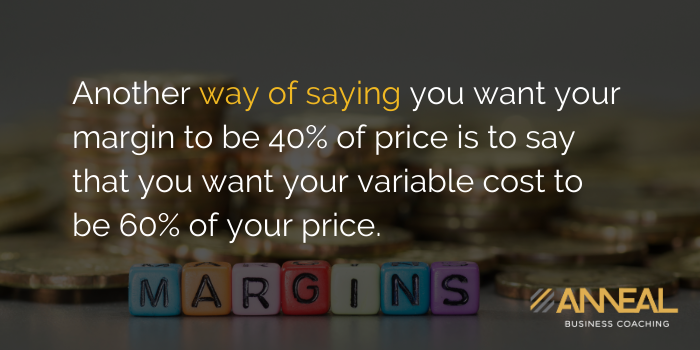In my last article, I listed four common obstacles to bidding with intent:
In this article we’ll look at obstacle number 2, confusion about margin and markup.
I said in article number 1 that we should have a target margin in mind when we bid jobs. The target, at a minimum, should generate enough gross profit to pay all of our overhead with enough left over to pay our debt and to grow our businesses.
Okay, so now that you have a target margin, what do you do with it? How do you use it to price a bid? Start with an understanding of the difference between markup and margin.
A markup is an amount we add to cost to come up with our bid price. A margin is the difference between our bid price and cost. They sound a lot like the same thing, but they’re not, and the difference is very real and very important.

A markup will give you a margin, but the margin will always be less than the markup. For example, a 40% markup will only give you a 28.5% margin.
To see how it works, assume you’re pricing a bid. You’ve done your estimating homework and your cost for material and labor (your variable cost) is $1,000. You want to price your bid to give you a 40% margin. How do you do that?
A lot of us do it like this:
$1,000 cost x 40% target = $400 gross profit
$1,000 cost + $400 gross profit = $1,400 price
That is a markup strategy and it will not get us to a 40% margin because:
$400 gross profit / $1,400 price = 28.5% margin
You can see that a $400 margin is only 28.5% of a $1,400 price. If you’ve been using a markup method to price bids, you can see why your actual results never seem to match your intended results.
In order to use a margin strategy, one that will at least give you a chance at hitting your target, you have to do things differently. The first step in pricing for margins is to express your variable cost as a percent of a price. I hate that there is this confusing step in the process, but it’s there so bear with me.

Another way of saying you want your margin to be 40% of price is to say that you want your variable cost to be 60% of your price. That makes sense, right? If your margin is 40%, your cost will be 60%. The simple formula for this extra step is
1 - % target margin = % variable cost
In our example:
1 - 40% target margin = 60% variable costs
Once you have that number, in this example 60%, you can find a price that will give you your target margin. The calculation looks like this:
$1,000 cost / 60% variable cost = $1,667 price.
You’ve done it! The gross profit on this bid is $667, which is 40% of your bid price.
$667 / $1,667 = 40%
Below is a table of margin and markup equivalents:
|
Markup |
Margin |
|
15% |
13% |
|
20% |
17% |
|
25% |
20% |
|
50% |
33% |
|
75% |
43% |
|
100% |
50% |
I can almost hear some of you thinking - “Yeah right. Bids are competitive. I can’t just raise my prices because Martin Holland wrote an article about intentional bidding.” Well, if the alternative is to die a slow death, you had better figure it out. I’ll talk more about this issue in the fourth article in this series.
If you’re interested in working together to improve your margins, bidding for jobs, and more, please contact me. I’d enjoy talking to you.